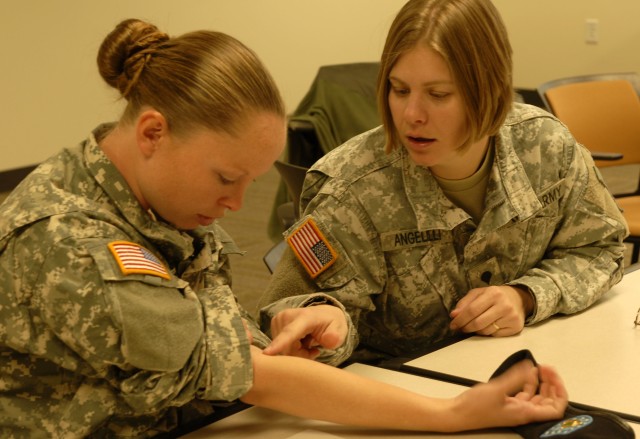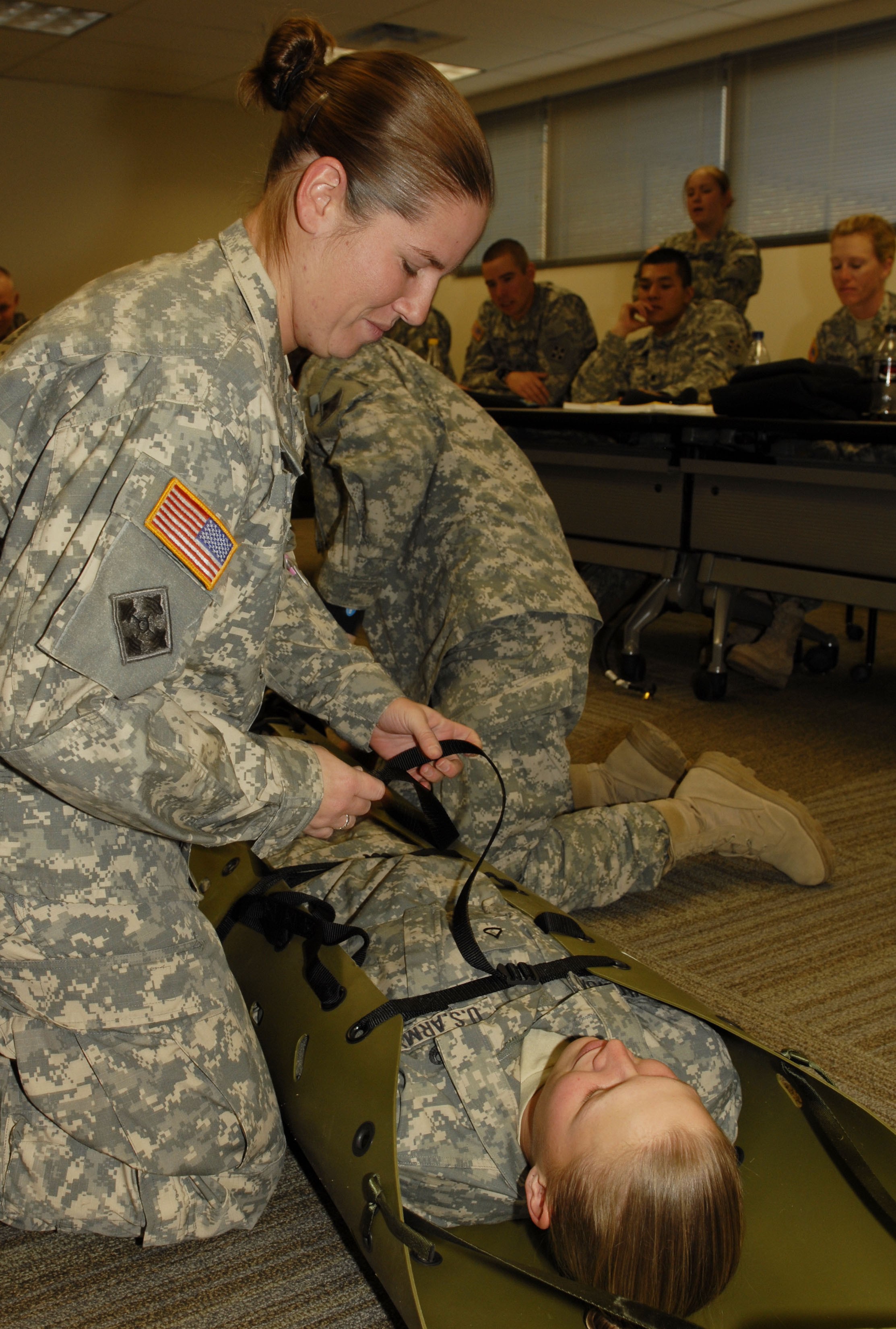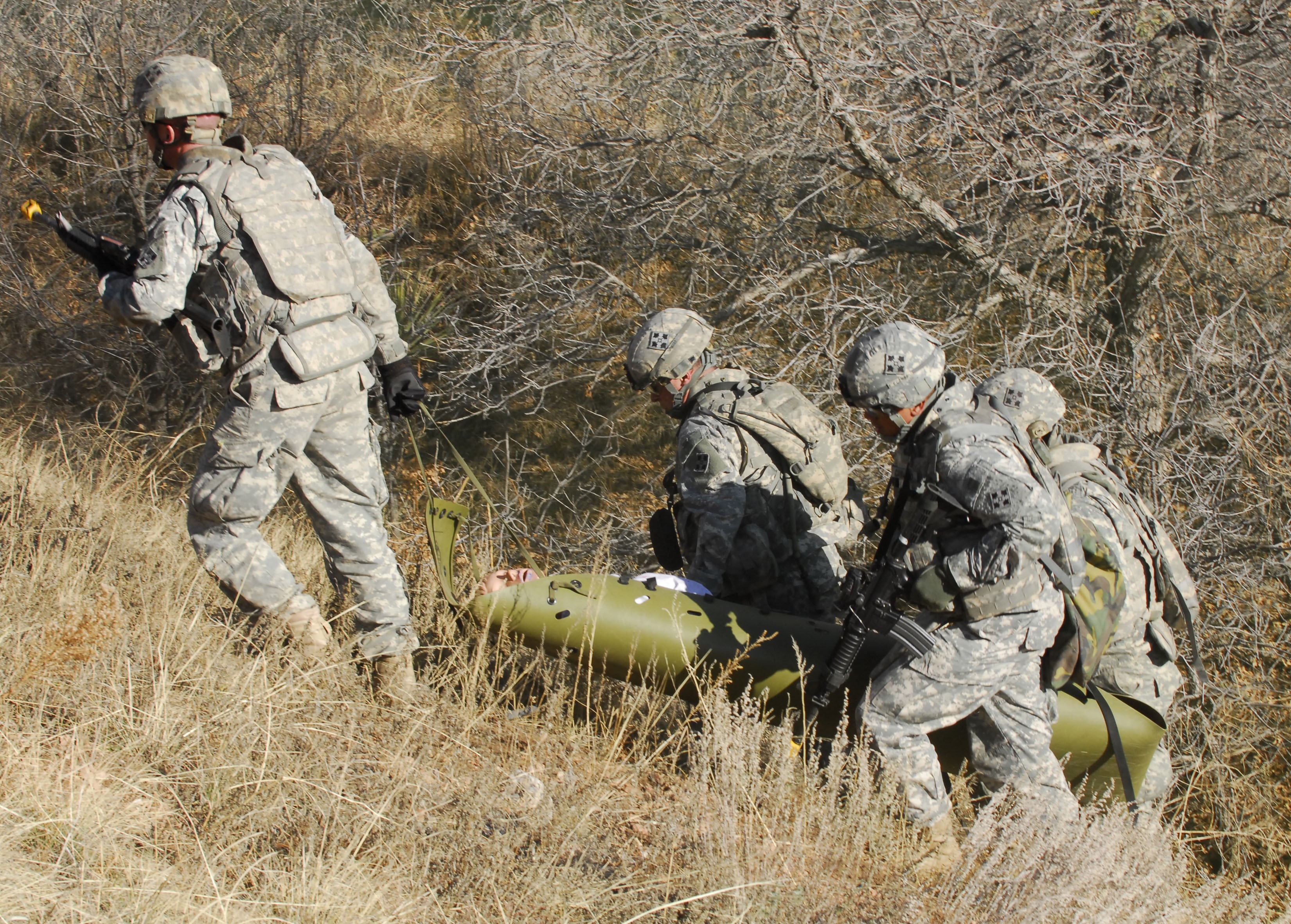FORT CARSON, Colo. - Soldiers face many hidden dangers during deployments, and it is not always the obvious dangers that cause Soldiers harm. Knowing how to handle hazardous situations when they occur is a challenge that 1st Brigade Combat Team, 4th Infantry Division is tackling head-on.
Soldiers of 1st Special Troops Battalion, 1st BCT, 4th Inf. Div. were the first in the brigade to undergo mandatory "Raider" First Responder training before deploying to Afghanistan later this year, said Staff Sgt. Jeffry Reed, Brigade Surgeon noncommissioned officer-in-charge.
The First Responder training is a rigorous, week-long course that teaches Soldiers how to assist combat medics in evaluating, treating and transporting an injured patient from the battlefield, said Spc. Jennifer Fay, a combat medic assigned to Headquarters and Headquarters Company, 1st STB, 1st BCT, 4th Inf. Div.
The new First Responder training has replaced the old Combat Lifesaver Course. The new training incorporates the elements of CLS with real-time "hands-on" instruction, both in the classroom and in the field, explained Fay.
The course starts with familiarization of medical terminology Soldiers will hear in combat. Once familiar with the terms, Soldiers are taught how to evaluate a patient from head to toe, how to control bleeding and apply bandages and eventually learn to administer intravenous fluid.
"Every single thing we learned was hands-on and we were required to demonstrate each skill ... to the instructor, which was a much more effective method of learning and retaining information," said Spc. Jennifer Angelilli, a supply specialist assigned to Headquarters and Headquarters Detachment, 1st STB, 1st BCT.
The field training is about building Soldiers' muscle memory, performing tasks over and over again, until it is ingrained in their skills set should an injury arise, said Fay.
"Every Soldier that goes through this First Responder course is basically an extension of the medic on the battlefield," she said. "We get each Soldier to work 'hands-on' with a partner to get them familiar with knowing what to look for and how to put their hands in the right places when treating a victim. That way, Soldiers can let medics know what's wrong with the victim and what they did to treat them."
After the classroom instruction and practical exercises, Soldiers must demonstrate what they learned during a day-long field training exercise, said Fay.
"My favorite part of the training was the FTX," said Angelilli. "Everything we did there had an element of stress added to it. We had to demonstrate each skill multiple times under the stress of live fire, gas and smoke."
Soldiers completing the First Responder training have a better understanding of what they must do when treating an injury while deployed, said Fay.
"In real-life, especially downrange, we're going to have those stressors and this course taught us how to work through that stress and remain focused at the task at hand," she said.






Social Sharing